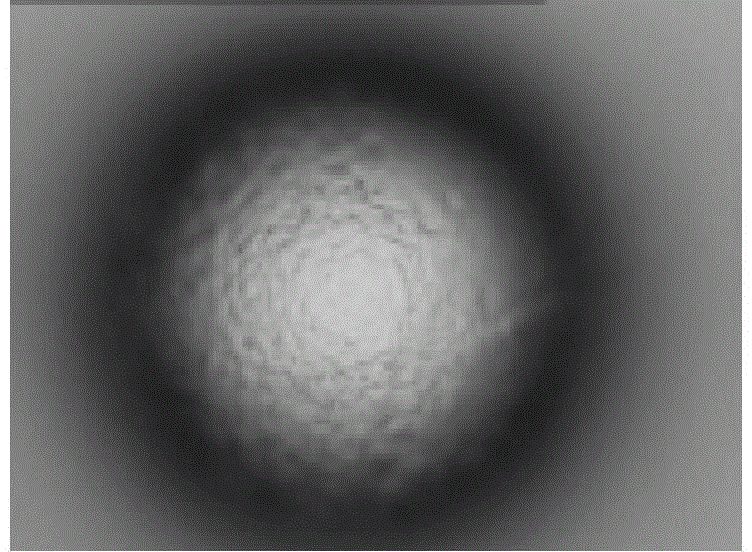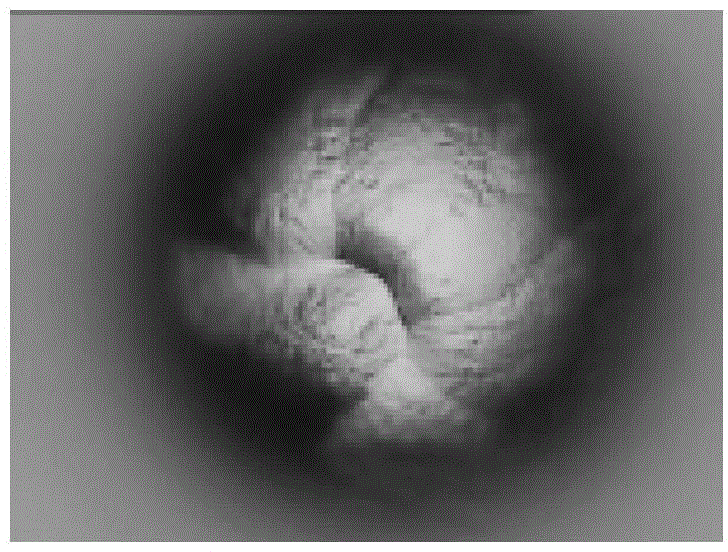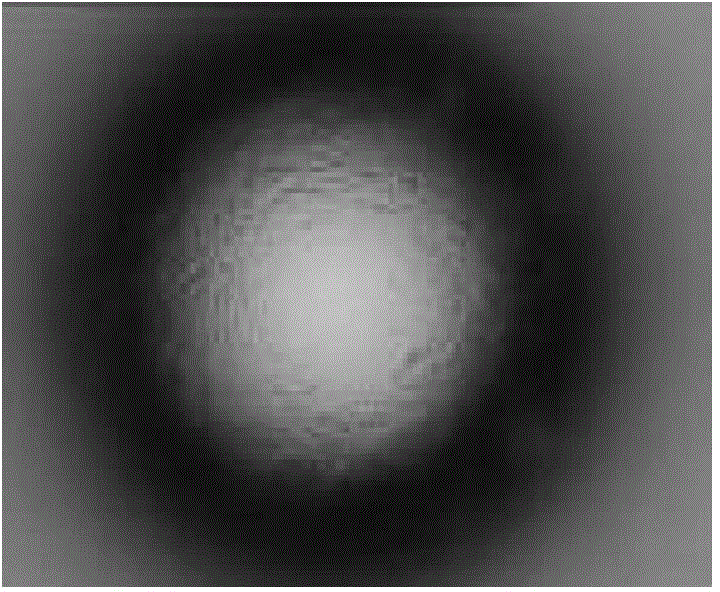Method for increasing balling rate of metal convex block in vacuum backflow technology
A technology of vacuum reflow and metal bumps, which is applied in the manufacture of electrical components, electrical solid devices, semiconductor/solid devices, etc., can solve the problem of low ball forming rate, and achieve the effect of improving roughness and improving low ball forming rate
- Summary
- Abstract
- Description
- Claims
- Application Information
AI Technical Summary
Problems solved by technology
Method used
Image
Examples
Embodiment 1
[0023] A method for improving the ball forming rate of metal lead bumps in a vacuum reflow process, comprising the following steps:
[0024] (1) Forming spherical or square metal solder bumps on UBM (Under Bump Metal);
[0025] (2) cleaning the metal solder bump prepared in step (1) through a brush;
[0026] (3) placing the metal solder bump processed in step (2) in a vacuum reflow furnace for reflow;
[0027] (4) The metal solder bump after reflow in step (3) is cooled to below 40° C. under vacuum condition.
[0028] Wherein, the metal solder bump in step (1) is a tin-lead bump, and the method for forming the tin-lead bump is an electroplating method, and its preparation method is to deposit the bottom metal layer of the bump on the wafer by sputtering, Then cover a layer of photoresist layer on the bottom metal layer of the bump, perform exposure and development to form the area of the solder bump, then electroplate solder, remove the photoresist and etch.
[0029] In s...
Embodiment 2
[0038] A method for improving the ball forming rate of metal lead bumps in a vacuum reflow process is characterized in that it comprises the following steps:
[0039] (1) Forming spherical or square metal solder bumps on UBM (Under Bump Metal);
[0040] (2) cleaning the metal solder bump prepared in step (1) through a brush;
[0041] (3) placing the metal solder bump processed in step (2) in a vacuum reflow furnace for reflow;
[0042] (4) The metal solder bump after reflow in step (3) is cooled to below 40° C. under vacuum condition.
[0043] Wherein, the metal solder bump in step (1) is a tin-silver bump, and the method for forming the tin-silver bump is an electroplating method, and its preparation method is the same as that of the aforementioned embodiment 1.
[0044] In step (2), the cleaning time of the brush is 120 seconds, and the brush is a steel belt winding nylon brush roller with a particle size of 2000 mesh alumina contained in the needle.
[0045] In step (3),...
Embodiment 3
[0047]A method for improving the ball forming rate of metal lead bumps in a vacuum reflow process is characterized in that it comprises the following steps:
[0048] (1) Forming spherical or square metal solder bumps on UBM (Under Bump Metal);
[0049] (2) cleaning the metal solder bump prepared in step (1) through a brush;
[0050] (3) placing the metal solder bump processed in step (2) in a vacuum reflow furnace for reflow;
[0051] (4) The metal bump after reflow in step (3) is cooled to below 40° C. under vacuum condition.
[0052] Wherein, the metal solder bumps in step (1) are tin-lead or tin-silver bumps, and the method for forming the tin-lead or tin-silver bumps is the stud bump method.
[0053] In step (2), the cleaning time of the brush is 120 seconds, and the brush is a round-hole embedded nylon brush roller containing silicon carbide with a particle size of 1500 mesh in the needle.
[0054] In step (3), the reflow temperature of the vacuum reflow furnace is 180...
PUM
| Property | Measurement | Unit |
|---|---|---|
| Granularity | aaaaa | aaaaa |
Abstract
Description
Claims
Application Information
 Login to View More
Login to View More - R&D
- Intellectual Property
- Life Sciences
- Materials
- Tech Scout
- Unparalleled Data Quality
- Higher Quality Content
- 60% Fewer Hallucinations
Browse by: Latest US Patents, China's latest patents, Technical Efficacy Thesaurus, Application Domain, Technology Topic, Popular Technical Reports.
© 2025 PatSnap. All rights reserved.Legal|Privacy policy|Modern Slavery Act Transparency Statement|Sitemap|About US| Contact US: help@patsnap.com



